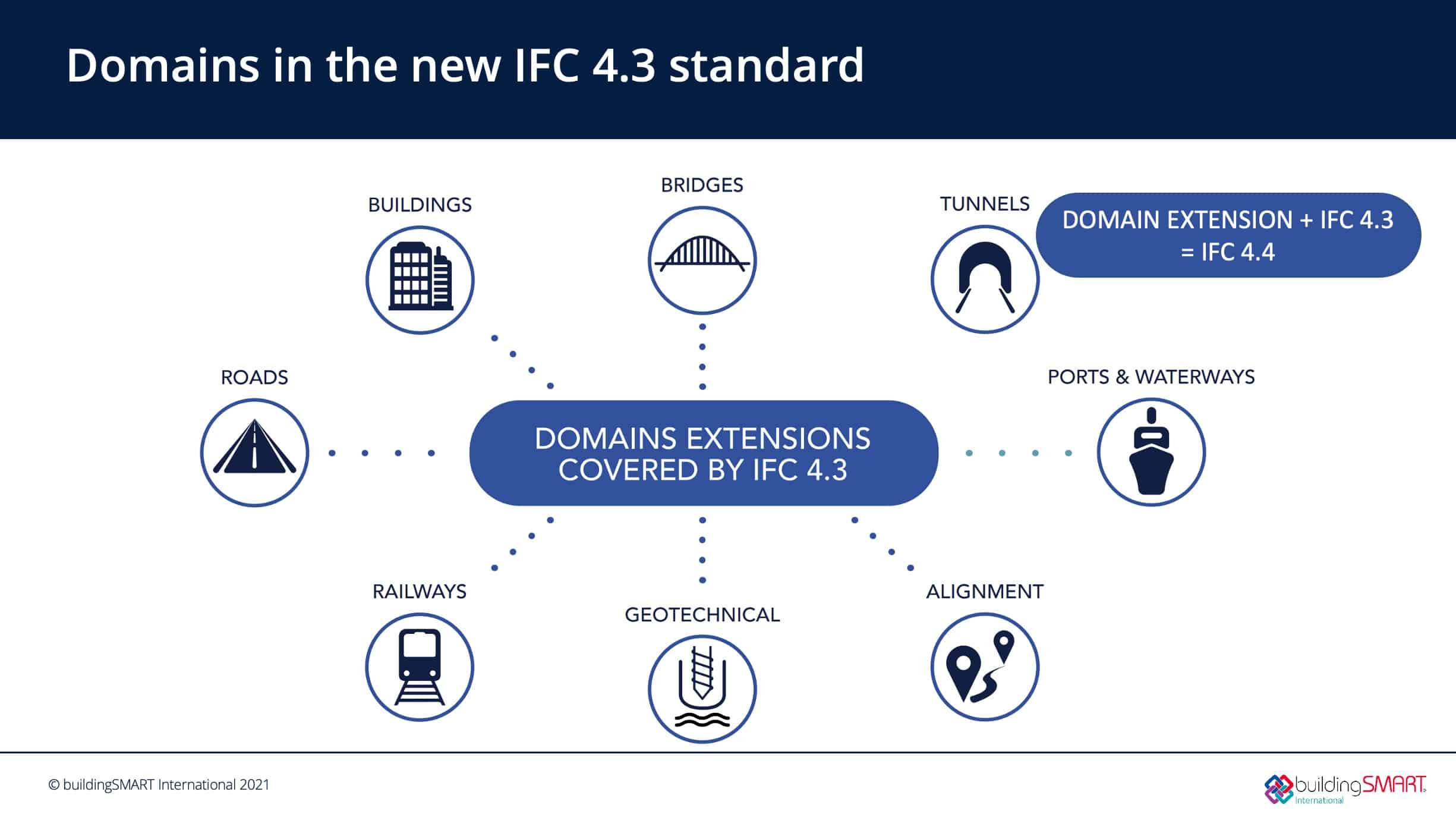The status of IFC 4.3 and the benefit of further extensions as IFC 4.4

By Richard Kelly
After a robust development process, bSI has published IFC 4.3 as a bSI Production Standard.
This means it is ready for users to use, for vendors to implement and has been sent to ISO for voting.
The IFC 4.3 program was established to extend the IFC benefits for horizontal assets. That is, infrastructure that stretches across the landscape such as roads and railways and all their associated features. The full scope includes Road, Railway, Ports & Waterways, Bridge, and the common elements between all these. Each of the domains has many different use cases that they wish to support with the IFC schema.
The first phase of the projects within the program defined the IFC entities for use cases including alignment reference, aggregate structures, earthworks, bridge structural, rail power, rail signalling, rail track, rail telecoms, drainage, maritime elements, and some geotechnics.
The second phase of these projects was to produce test instructions and deliver software validation of the IFC 4.3 standard. This phase has also included the definition of the three base implementation levels; namely the Reference View, the Alignment Based Reference View and the Design Transfer View.
The IFC 4.3 bSI Production Standard incorporates infrastructure entities into the IFC schema and by the end of 2022 this will be further extended to incorporate Tunnel entities. This extension will be published as IFC 4.4.
ISO has accepted the IFC 4.3 submission as a draft international standard (DIS) and is progressing it to be published as a new release of ISO 16739 in 2023.
Users and software organisations have been closely involved in the validation of IFC 4.3 and can now develop software and solutions based upon it.
The release of IFC 4.4 will build on top of the just published IFC 4.3.
